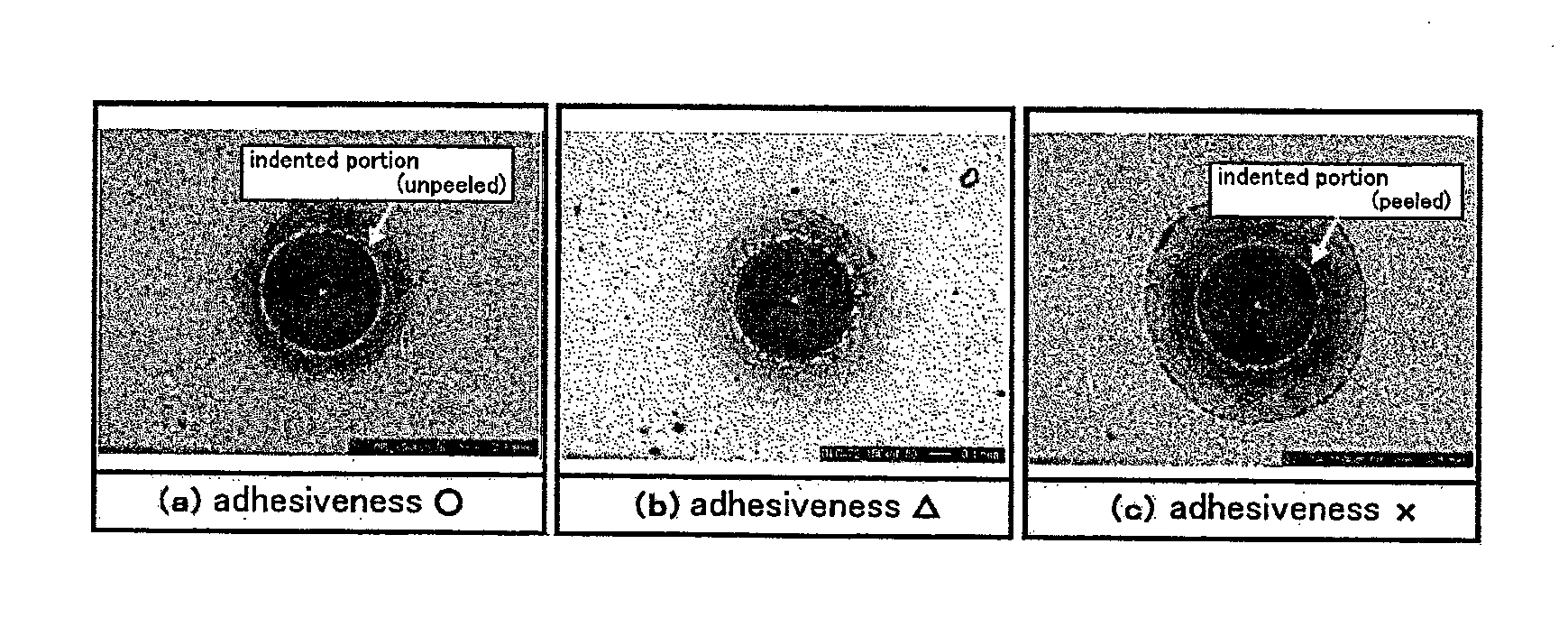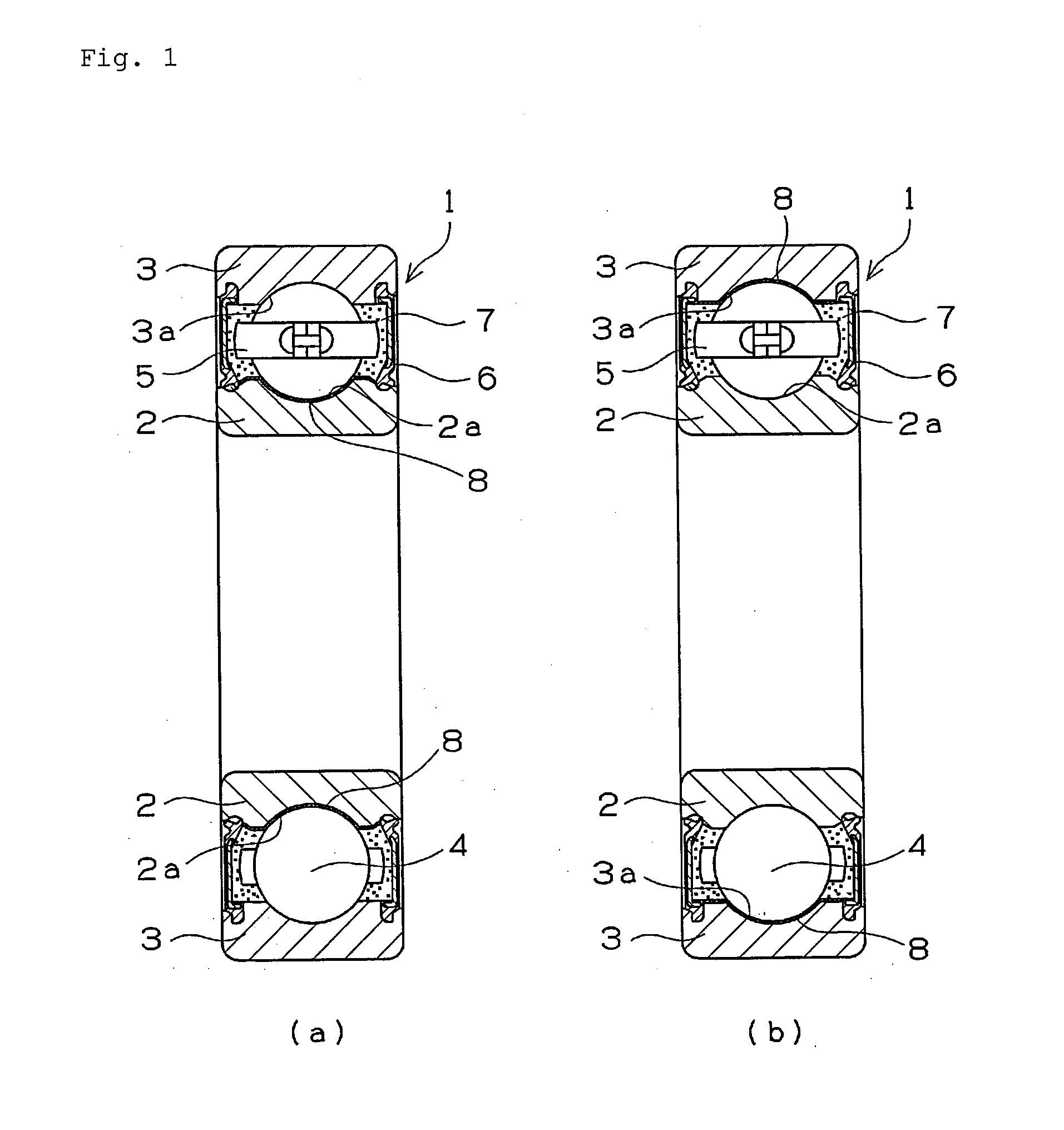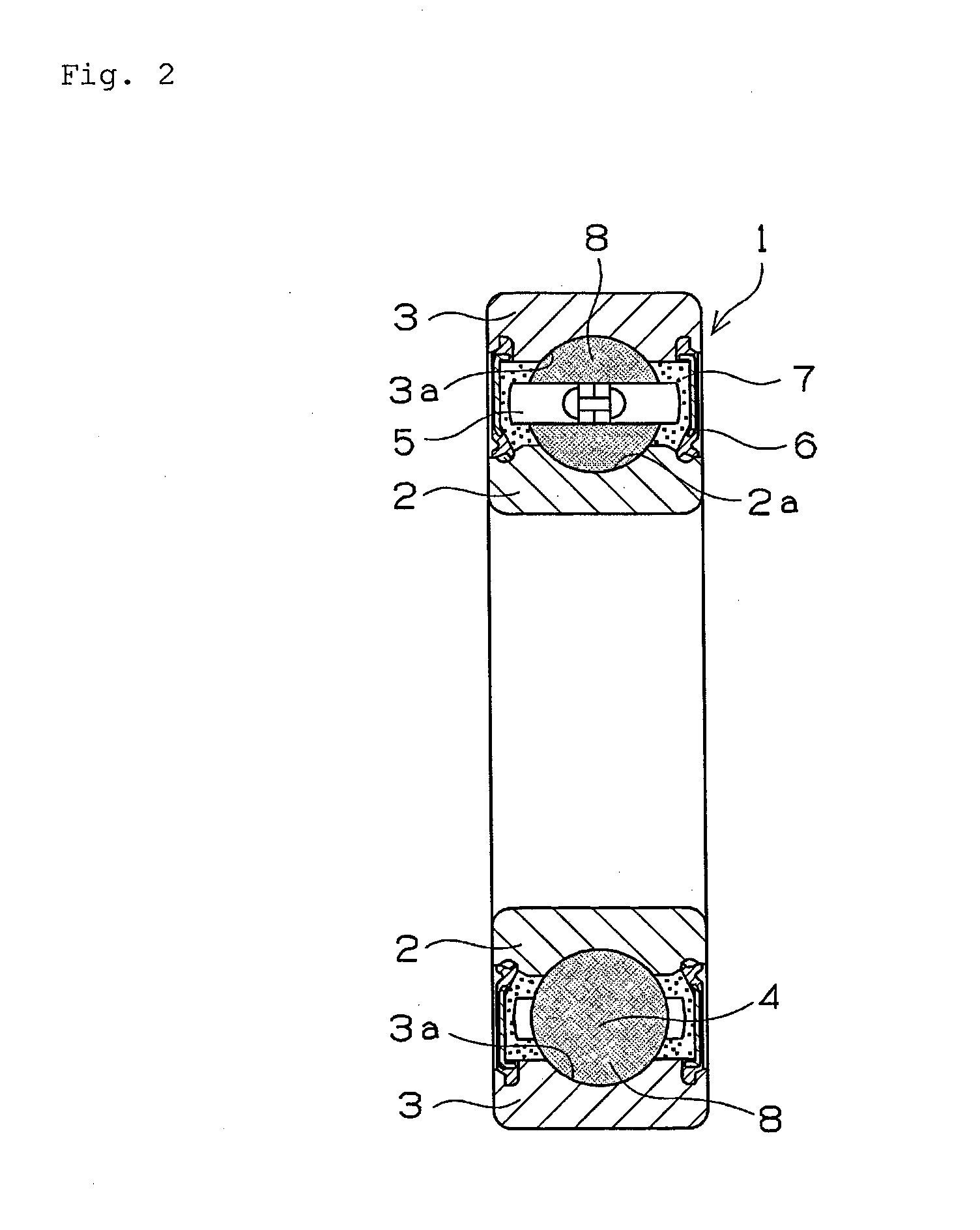Rolling bearing
- Summary
- Abstract
- Description
- Claims
- Application Information
AI Technical Summary
Benefits of technology
Problems solved by technology
Method used
Image
Examples
examples
Formation of Film on Inner and Outer Rings
[0113]As the hard film to be formed on the rolling bearing of the present invention, the hard films were formed on predetermined base materials to evaluate the properties of the hard films. Similar hard films were formed on the raceway of inner and outer rings of rolling bearings to evaluate the properties of the rolling bearings.
[0114]The base materials used to evaluate the hard films, the UBMS apparatus, the sputtering gas, and the film-forming condition of the foundation layer and that of the mixed layer are as described below.
[0115](1) Base material: base materials shown in each table
[0116](2) Dimension of base material: disk (φ48 mm×φ8 mm×7 mm) having a mirror surface (Ra: about 0.005 μm)
[0117](3) UBMS apparatus: UBMS202 / AIP composite apparatus produced by Kobe Steel, Ltd.
[0118](4) Sputtering gas: Ar gas
[0119](5) Film-forming condition of foundation layer and that of mixed layer:
[0120]Foundation layer: The inside of a film-forming chamb...
examples 1-1 through 1-8 , 1-10
Examples 1-1 through 1-8, 1-10, Comparative Examples 1-1 through 1-5, and Reference Examples 1-1 through 1-8
[0124]After the base materials shown in tables 1 through 3 were ultrasonically cleaned with acetone, the base materials were dried. After they were dried, they were mounted on the UBMS / AIP composite apparatus to form the foundation layer and the mixed layer both made of the materials shown in tables 1 through 3 in the above-described film-forming condition. The DLC film which is the surface layer was formed on the mixed layer in the film-forming conditions shown in tables 1 through 3 to obtain specimens each having a hard film. “Vacuum degree” shown in tables 1 through 3 means a vacuum degree inside the film-forming chamber of the above-described apparatus. The obtained specimens were subjected to a wear test, a hardness test, a film thickness test, a scratch test, and a thrust type rolling fatigue test. Results are shown in each of tables 1 through 3. Reference numerals 1) th...
example 1-9
[0125]After a base material (Vickers hardness Hv: 1000) subjected to the plasma nitrogen treatment by using a radical nitriding apparatus produced by Japan Electronics Industry Co., Ltd was ultrasonically cleaned with acetone, the base material was dried. After the base material was dried, it was mounted on the UBMS / AIP composite apparatus to form the foundation layer (Cr) and the mixed layer (WC / DLC) both made of the material shown in table 1 in the above-described film-forming condition. The DLC film which was the surface layer was formed on the mixed layer in the film-forming condition shown in table 1 to obtain a specimen having a hard film. The obtained specimen was subjected to tests similar to those of the example 1-1. Results are shown in table 1.
[0126]A friction test was conducted on the obtained specimens by using a friction testing machine shown in FIG. 8. FIGS. 8(a) and 8(b) show a front view and a side view respectively. A mating material 32 consisting of a quenched ste...
PUM
| Property | Measurement | Unit |
|---|---|---|
| Thickness | aaaaa | aaaaa |
| Force | aaaaa | aaaaa |
| Pressure | aaaaa | aaaaa |
Abstract
Description
Claims
Application Information
 Login to View More
Login to View More - R&D
- Intellectual Property
- Life Sciences
- Materials
- Tech Scout
- Unparalleled Data Quality
- Higher Quality Content
- 60% Fewer Hallucinations
Browse by: Latest US Patents, China's latest patents, Technical Efficacy Thesaurus, Application Domain, Technology Topic, Popular Technical Reports.
© 2025 PatSnap. All rights reserved.Legal|Privacy policy|Modern Slavery Act Transparency Statement|Sitemap|About US| Contact US: help@patsnap.com



